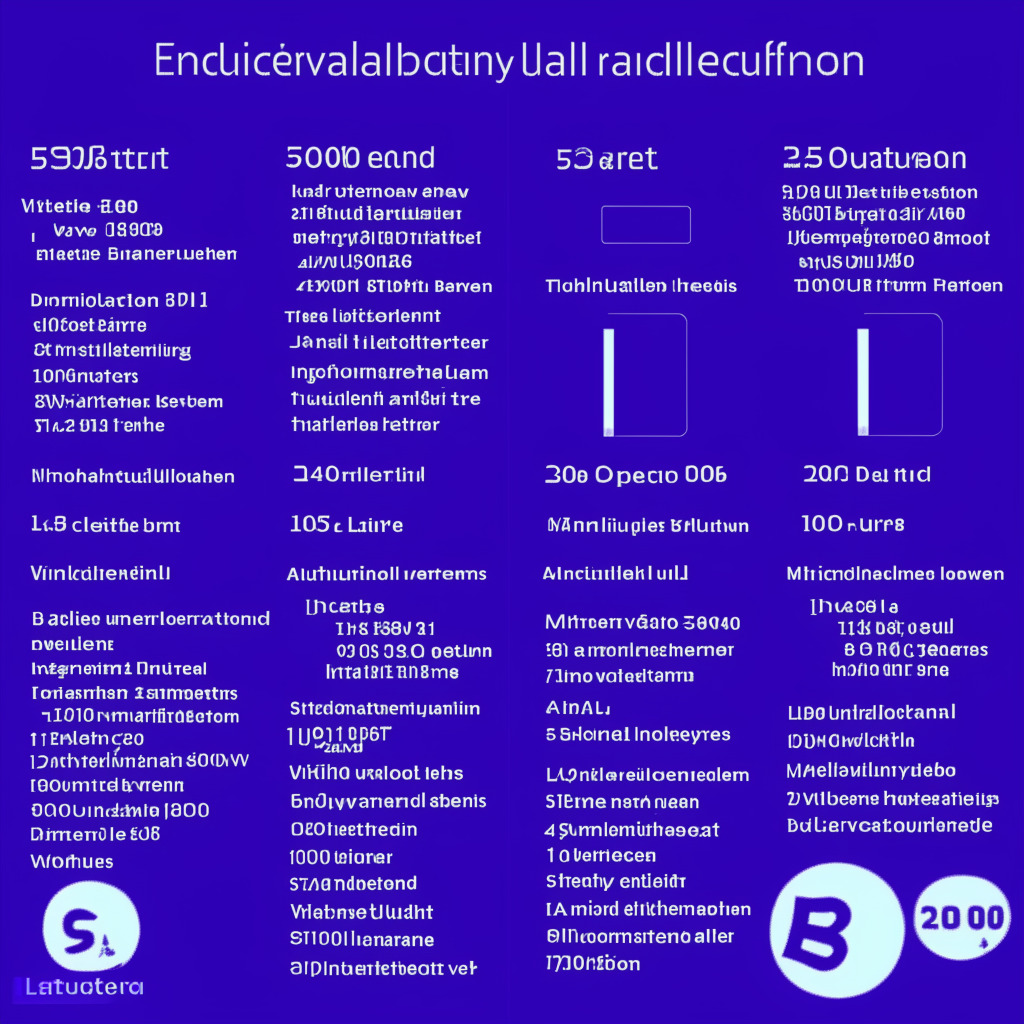A proposal submitted by lidomaxi aims to increase Lido’s native governance token, LDO’s utility by introducing staking, buyback programs, an insurance fund for Lido DAO, and a revenue-sharing parameter. This development could potentially revamp LDO, but concerns regarding complexity and impact on other token holders remain.
Search Results for: Nansen
Celsius Withdraws $781M in stETH from Lido: Strategic Move or Risky Gamble?
Celsius is transferring 428,015 stETH ($781 million) from liquid staking platform Lido, possibly in preparation for withdrawal. This move could enable Celsius to stake directly without Lido’s intermediary role, increasing profits but also exposing them to potential security risks and impacting Lido’s staking dominance.
Lido V2 Upgrade Boosts LDO Token and Enhances Liquid Staking: Pros, Cons, and Main Conflict
Lido upgraded to V2 on Ethereum, allowing users to unstake stETH and receive ETH at a 1:1 ratio. The upgrade also introduces Lido-issued NFTs representing withdrawal requests, though secondary market activities don’t affect the withdrawal process. Lido dominates nearly 80% of the liquid staking derivatives market on Ethereum.
Ethereum Validators Face Long Wait Times: Impact on Network Stability and Investor Mindsets
Cryptocurrency investors may face a 26-day wait to settle as Ethereum validators due to high demand, with 50,000 validators in queue. The Shapella upgrade enabled ETH withdrawals while boosting staking deposits, raising concerns about network stability and long-term viability for some investors.
Ethereum Validators Face 26-Day Wait Time: Implications for Staking and Network Growth
Crypto investors face a waiting time of nearly a month to become network validators on Ethereum, with 640 hours required for setup. Almost 50,000 validators are in the queue, attracted by the nearly 5% annual yield. The lengthy waiting times highlight the strong interest in participating in the Ethereum network, but need to be addressed to maintain a seamless user experience.
Meme Coin Mania Fades as Top Traders Reduce PEPE Holdings: Analyzing the Shift in Sentiment
Recent data from crypto intelligence firm Nansen suggests the fervor for meme coin Pepecoin may be waning, as top-performing traders are reducing their holdings. The hype surrounding the token may be slowing down, with smart money wallets decreasing their PEPE stash by $3 million in the past 24 hours, indicating diminishing potential for profit.
Ethereum Locked Tokens Reach All-Time High: Analyzing Implications for Price Rally and Market Dynamics
Ethereum holders and investors celebrate as the amount of Ethereum locked on the Beacon chain reaches an all-time high of 19,375,242 ETH, with a total value locked of $27.7 billion. Binance CEO Changpeng Zhao hints at a potential price rally for Ethereum in response to increased locked ETH, suggesting a reduction in overall market supply may be imminent.
Ethereum’s Shanghai Upgrade: Selling Pressure Offset by Staking Confidence & CEX Operations
Ethereum’s Shanghai upgrade, which enabled staking redemptions for the first time, has been a “non-event” with ETH staking deposits surpassing withdrawals, pushing staked ETH to a new all-time high of 19.55 million. The majority of withdrawn ETH were sent to centralized exchanges for internal operations, signaling strong overall confidence from investors in the network and the asset.
NFT Trading Volume Surge in Q1 2023: Analyzing the Impact of Blur’s Token Airdrop
NFT trading volumes on Ethereum surged in Q1 2023, partially due to the airdrop farming frenzy for Blur’s native token, BLUR. Volumes doubled from $1.9 billion in Q4 2022 to $4.5 billion in Q1 2023. However, recent months show a bearish outlook with declining trading volumes and sales.
Ethereum Shanghai Upgrade: Analyzing Market Sentiment and Liquid Staking Leaders
The Shanghai upgrade’s impact on the Ethereum staking market reveals strong bullish sentiment and growth in liquid staking service providers like Lido Finance and Coinbase. With 97,586 ETH staked post-upgrade, the increased staking activity reduces sell pressure and indicates optimism for Ethereum’s future.
The Rise and Risks of Pepecoin: Insights into the Memecoin Phenomenon and Market Impact
Pepecoin (PEPE) experienced a 2,000% increase in value following its April 2023 launch, driven by zealous memecoin hype. Research analyst Xin Yi estimated the total memecoin market value at around $20 billion, with social aspects significantly influencing investor sentiment and action. However, memecoins carry inherent risks, often resulting in liquidity crunches and losses for smaller investors.
Rising Blockchain Competitors Threaten Solana’s Dominance: Can It Stay Ahead?
Six new blockchain networks are set to launch soon, intensifying competition in the blockchain ecosystem. Despite the highly competitive landscape, Solana Labs founder Anatoly Yakovenko remains confident in Solana’s technical strengths, such as speed, higher transaction numbers, and more nodes. However, the influx of capital into new projects could cut into Solana’s market share, necessitating adaptation and innovation.
Ethereum 2.0 Milestones: All-Time High Stakes & Validators vs Market Manipulation Fears
Ethereum 2.0 hits new all-time high with 19,037,686 staked coins and 590,854 validators. Increased interest in the upgrade’s capabilities may have driven the influx, while skeptics cite market pressure or manipulation. High transaction fees and potential price manipulation raise concerns for the future of the network.
Pepe Memecoin Boom: Uniswap Success, Challenges, and Sustainability Debate
PEPE memecoin leads the pack with a 2100% price hike since its launch, gaining popularity on decentralized exchange Uniswap. Despite challenges like liquidity issues, PEPE continues to make waves on centralized exchanges. The long-term sustainability and value of meme-oriented cryptocurrencies remain uncertain; investors should approach them with caution.
Ethereum Upgrade Shifts Staking Preference: Decentralized Platforms on the Rise
Since Ethereum’s Shanghai upgrade, centralized crypto exchanges Binance and Coinbase have seen large outflows of staked ether, while decentralized liquid staking protocols experience significant inflows. Regulatory risks and higher rewards offered by decentralized platforms are driving this shift away from centralized staking services.
Avalanche C-Chain’s Wild Ride: Analyzing Q1 2023’s Transaction Fluctuations and Gas Price Advantage Over Ethereum
Avalanche C-Chain, the contract chain allowing the creation of Ethereum-compatible smart contracts on the Avalanche […]















